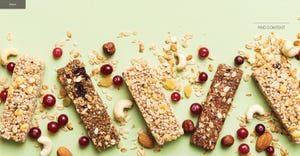A new report from Rabobank reveals the U.S. avocado consumption hit record highs, even during the COVID-19 pandemic, as consumers looked for healthy and versatile options.

According to the report, consumer demand for avocados, fueled by economic recovery, sustained retail sales and increasing foodservice activity, will continue to support prices. Increased shipments from Peru and Mexico will offset a lighter California crop in 2021, but avocado availability in the U.S. may be tight in some weeks later this summer when California’s and Peru’s seasons end and Mexico transitions to the new season.
Industry marketing efforts have been recognized for their innovation and will continue boosting the demand for this trendy superfood. Rabobank notes avocado consumption still has plenty of headroom for growth. Per capita consumption of avocados in the U.S., which currently stands at 9 pounds, could surpass 11 pounds within five years.
Environmental sustainability along the supply chain will become increasingly relevant to maintain or gain market access. The so-called “green gold” may soon need to go greener.
Food & Beverage Insider insights
Avocados are everywhere—restaurant menus, food and beverage ingredient decks, produce aisles and more. These might green fruits—rich in omega-3 fatty acids, vitamins A, D and E as well as unsaturated fats—have become particularly relevant for those who follow the keto diet, along with other food tribes that emphasize the importance of consuming plenty of “good" fats. One-third of a medium avocado (50 g) has 80 calories and contributes nearly 20 vitamins and minerals, making it a great nutrient-dense food choice. Avocados also are low in carbohydrates and sugar and provide 8% of the daily value (DV) for fiber.
A January 2021 study published in the Journal of Nutrition suggested avocados may play a role in developing and maintaining a healthy microbiota. According to the researchers, “nutrient-dense [avocado] affects digestive physiology, as well as the composition and metabolic functions of the intestinal microbiota.”
A 2018 study from researchers at Illinois Institute of Technology published in the journal Nutrients suggested eating a meal containing one half or a whole avocado compared to a meal with similar calories, but low in fat and high in carbohydrate, improved post-meal responses important for metabolic control and heart health in middle-aged, overweight/obese adults. Further, a 2014 study published in the Nutrition Journal suggested adding one-half of a fresh avocado to a lunch may help healthy, overweight people feel more satisfied and reduce their desire to eat following a meal.
In addition to its nutritional superpowers, avocados also offer a lot in the way of taste and texture, and CPG brands are delivering innovative and tasty products across multiple categories. The avocado’s mild, delicate flavor and richly creamy texture can go either sweet or savory, making it an ideal substitute for dairy in plant-based versions of products that range from dressings to sauces, mayonnaise, “cheesy” snacks, ice creams, butter and even milk. The ingredient has become ubiquitous that brands are rolling out innovative products packed full of avocado goodness. Hungry for more innovative products boasting avocados superpowers? Check out “Unboxed: 12 methods to avocado madness” our sister site, newhope.com.
About the Author(s)
You May Also Like






